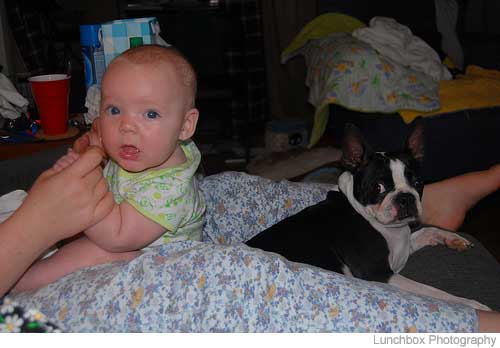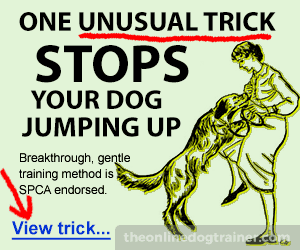House Training a Small Dog
By Beth Baker

House training a small dog can sometimes be a little more difficult than training a much larger dog. After all, if a larger dog makes a mess in the house, you’re going to notice it a lot sooner than if a smaller breed does this.
However, while your house training efforts might require just a little more patience, most smaller breeds of dog are quite intelligent. They’ll learn very quickly if they’re given the right incentives and motivation.
Follow these simple tips and you should find it only takes a couple of days to train your dog to go potty where you want him to do it every time.
You CAN have the calm, well-behaved little dog you've always wanted! Click here to learn how.
Step One: Before you begin any kind of training with a small dog, remember that they don’t understand the words you say to them. They only understand your tone of voice and your body language. For this reason, it’s vitally important that you don’t yell at or scream at any dog. You also can’t expect to reason with it using words, as so many people try to do.
Instead, work on ways to make your dog understand when you’re happy and when you’re not. You need to do this using the dog’s own form of language, based on the sounds his mother would have made before he left the litter.
A happy tone should be higher pitched and light. An angry or disapproving tone should never be any more than a simple “ah ah”, spoken in a low growl, just like your puppy’s mother would have done to scold him.
Doggy Dan explains responsible potty training
Access all 100+ videos for 3 days for just $1
Or first, let me tell you what it's like to be a member
Step Two: Try to learn when your puppy is most likely to go to the bathroom. This will usually be immediately after waking up and very soon after eating.
When your dog wakes up, encourage him to go outside and be prepared to stand out there with him. Close the door so he can’t rush back inside. Then simply wait until the pup does his business. The moment he squats to do what he has to do, praise him well for going.
Your pup will not understand why he’s being praised for doing something he had to do. However, you can guarantee he’ll like the praise.
Step Three: This step always tests even the most patient of people, but it is necessary. Remember, you’ve just praised your dog for doing his business. He won’t know that praise only came because he did it outside. He will think you’ll praise him whenever he goes.
This always leads all puppies to try and do it on the rug, right in front of you. They’re seeking your praise and affection. For this reason, you must not punish or scold the pup for doing this.
Instead, reprimand him by saying “ah ah” in a low tone of voice and take him outside immediately. Don’t yell. Don’t scream. And definitely don’t punish or smack any dog for any reason. This will never work as a form of discipline on any sized dog and can actually cause aggression.
Your dog may not need to relieve himself once you’re outside again, but continue to praise him for being out there. It will only take three or four attempts followed by very positive praise from you for your dog to understand the rules. He will realize that you’re happy when he goes outside, but he gets scolded for going anywhere inside the house.
Before long, you’ll have a small dog who whines or scratches at the door, asking to be let out so he can earn some more positive praise from you. But you can be sure he won’t bother doing it in the house ever again.
You CAN have the calm, well-behaved little dog you've always wanted! Click here to learn how.







